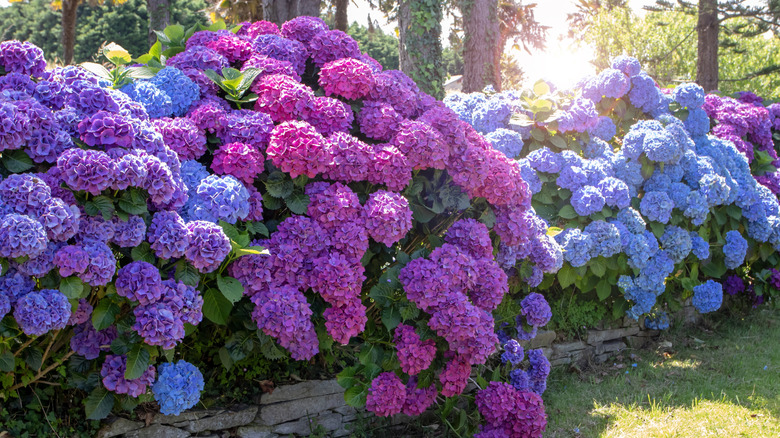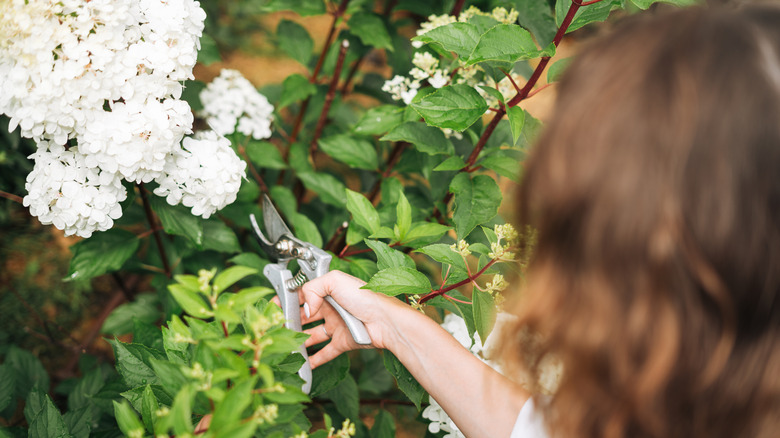The Garden Accessory That Prevents Hydrangeas From Drooping In Heavy Rain
Few sights are as disheartening as a lush hydrangea weighed down and splayed open after heavy rain. These beloved shrubs are especially prone to flopping because of their large, dense flower heads that act like sponges during storms. Some hydrangea types, such as Bigleaf hydrangea (Hydrangea macrophylla) and smooth hydrangea (Hydrangea arborescens 'Annabella'), are especially vulnerable because their blooms can grow to the size of a dinner plate without a structure sturdy enough to hold them upright. Rainwater adds significant weight, pulling stems downward, while wind can compound the damage. Over time, unsupported stems may break or grow at odd angles, making the plant look messy and possibly reducing next year's bloom potential. This can result in common hydrangea issues such as pest or fungal infestations, as bent stems and crowded foliage create the perfect environment for problems to develop unnoticed.
To avoid these problems, gardeners often look for solutions to prevent hydrangeas from drooping in heavy rain, including simple but effective garden accessories, such as plant supports. Peony and tomato cages are two reliable solutions for smaller hydrangea varieties. Their circular design provides support, helping stems stay upright even when drenched. Consider using soft fabric ties paired with bamboo stakes for larger or more sprawling types. Another low-visibility trick is to use clear fishing line or green garden twine stretched between discreet stakes. This creates an invisible framework that holds stems in place, without detracting from the plant's natural beauty. Some gardeners repurpose old ladder sections or decorative metal trellises to provide sturdy, stylish supports. All these methods give your hydrangeas the backup they need to weather the storm and bounce back quickly once the sun returns.
How to prevent hydrangea flopping before it starts
The best time to support your hydrangeas is before trouble starts. Ideally, install cages or stakes in early spring, just as new growth emerges. This allows the plant to grow through and fill out the support, making it nearly invisible once the blooms arrive. Trying to add support after the plant is full-size, risks damaging stems or compacting the plant's shape. Always use soft materials that won't cut into tender growth when tying stems. Fabric plant ties, stretchy tape, or garden twine all work well and adjust as the stems thicken during the season.
Pruning also plays a key role in keeping hydrangeas upright. There are hydrangea varieties you should always prune for them to thrive. Cutting back stems at the right time helps encourage sturdy new growth. Prune smooth hydrangeas in late winter or early spring and bigleaf types right after flowering. Remove weak or crossing branches at the base, and trim stems just above a healthy set of buds. Another option is to choose varieties that naturally hold their shape better, such as Hydrangea paniculata (panicle hydrangea) or dwarf cultivars that need less support. If you are planting new hydrangeas, be sure to space them appropriately. Giving each shrub adequate room helps air circulate and reduces the chance that the branches will lean outward for light and become unstable. Learning how to grow and care for hydrangeas involves combining thoughtful pruning, timely staking, smart variety selection, and good spacing.

